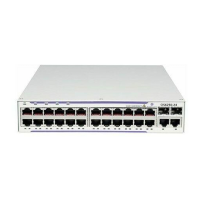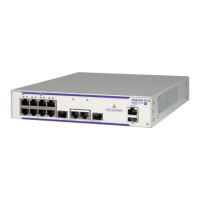CLI Usage
7210 SAS D, E, K OS Basic System Configuration Guide Page 35
Editing Keystrokes
When entering a command, special keystrokes allow for editing of the command. Table 7 lists the
command editing keystrokes.
Table 7: Command Editing Keystrokes
Editing Action Keystrokes
Delete current character
<Ctrl-d>
Delete text up to cursor
<Ctrl-u>
Delete text after cursor
<Ctrl-k>
Move to beginning of line
<Ctrl-a>
Move to end of line
<Ctrl-e>
Get prior command from history
<Ctrl-p>
Get next command from history
<Ctrl-n>
Move cursor left
<Ctrl-b>
Move cursor right
<Ctrl-f>
Move back one word
<Esc><b>
Move forward one word
<Esc><f>
Convert rest of word to uppercase
<Esc><c>
Convert rest of word to lowercase
<Esc><l>
Delete remainder of word
<Esc><d>
Delete word up to cursor
<Ctrl-w>
Transpose current and previous character
<Ctrl-t>
Enter command and return to root prompt
<Ctrl-z>
Refresh input line
<Ctrl-l>

